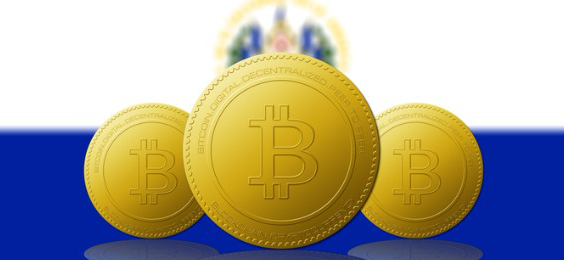If you own McDonald’s (MCD), you might consider selling the stock right now.
Don’t get me wrong. McDonald’s is one of the world’s greatest blue-chip companies. I’m sure many of you reading this own the stock in one of your retirement accounts like a 401(k) or IRA.
The fast-food king is ranked as one of the top brands in the world. It has rewarded investors pretty well for many years.
The company has generated tens of billions of dollars in free cash flow over the years. It also increased its annual dividend for nearly four decades.
However, McDonald’s is no longer that conservative, income-generating stock you can hold forever. It’s trading at a super-expensive valuation.
On top of that, the company’s huge dividend may be at risk.
Let me explain …
What Happens When Customers Grow Up
McDonald’s has made a fortune serving Big Macs and Chicken McNuggets to customers around the world. Their food is inexpensive and can be served in minutes.
This has been a great business model that targets young families who want a quick cheap meal after a long day of work.
However, this business model has been turned upside-down over the past few years.
Studies show that people are choosing to eat healthier. They don’t mind spending more money to shop at Whole Foods Market (WFM). They are choosing to go to other fast-food restaurants like Chipotle(CMG) and Panera Bread (PNRA) — which offer lots of healthy items on their menus.
More important, most consumers are passing these healthy-eating habits down to their children. This is causing a huge secular shift in the way people eat.
Too Late to Trim the Fat?
McDonald’s is well-aware of this trend. They introduced salads and chicken wraps over the past few years. They now include fruit (to replace fries) and low-fat drinks in their Happy Meals for kids.
This strategy has not had a major impact for the company thus far. Sure, McDonald’s is selling more salads and wraps.
But it may be doing so at the expense of losing its identity as a cheap burger joint.
3 Straight Years of Falling Sales
For example, McDonald’s has watched its sales collapse over the past two years from $28 billion in 2013 to $27 billion in 2014.
This year, the company is expected to generate sales of just $25.5 billion, according to consensus estimates.
That makes three straight years of sales declines for one of the world’s greatest blue-chip stocks. Looking ahead, this weak sales trend is not expected to reverse.
There are 21 institutional analysts that provide research on McDonald’s. These are companies like Goldman Sachs and JPMorgan.
Based on their estimates, McDonald’s sales are expected to remain flat from 2015 through 2017.
That’s three years of zero sales growth!
As you can also see from the chart above, McDonald’s has been able to increase earnings over the past four years. This is mostly due to massive buybacks and cost-cutting.
In other words, management has done a great job manipulating earnings.
This is a way to fool investors into thinking business is good. Earnings manipulation is common among companies that are cash-rich and have trouble growing.
However, McDonald’s is no longer cash-rich.
In fact, the company announced it will cut spending (capex) in 2015 from $3 billion to $2 billion.
Most of the $3 billion was used to open up new stores in 2014. This initiative made sense since McDonald’s was having trouble increasing sales within existing stores.
But the strategy quickly backfired.

McDonald’s was trying to expand in places like China, Japan, Russia and Latin America. This was the company’s best chance for growth, as America has more than its share of McDonald’s across the country.
Yet …
- There were reports that vendors were shipping expired meat in China.
- In Japan, Chicken McNuggets had to be recalled nationwide.
- Demand was much weaker than expected in Latin America.
- In Russia, the food quality was questioned and McDonald’s became the subject of a government probe.
In short, sales outside of the Americas have been a disaster for the company. Plus, the stronger U.S. dollar has had a negative impact on earnings.
This year, management said it will only open 1,000 new stores (down from 1,300 in 2014). They announced they would cut spending (capex) from $3 billion to $2 billion.
When large companies cut back on spending, it’s often a negative. It means they expect business to weaken in the future.
After all, most companies need to spend money in order to make money.
But there is a bigger reason McDonald’s is cutting spending.
The company needs to preserve its huge 3.5% dividend.
McDonald’s paid out over $3 billion in dividends last year. They also paid more than $3 billion to buy back their stock.
Remember, it’s a necessity for McDonald’s to buy back its stock if it wants to make sure earnings exceed consensus estimates.
That’s over $6 billion in spending. Yet, McDonald’s only generated $4 billion in free cash flow last year.
It Just Doesn’t Add Up
During their latest conference call (in January), McDonald’s said it plans on returning over $6 billion a year to shareholders in the form of buybacks and dividends.
Where do they expect to get this money from?
Plus, McDonald’s increased its annual dividend for 38 consecutive years. To keep this streak alive, the company must spend even more money on its dividend in the future.
That’s not an easy thing to do considering McDonald’s is expected to grow sales by 0% over the next three years.
These are just some of the problems McDonald’s has to deal with right now. Other headwinds include:
- Higher wages (the minimum wage is being raised in most states)
- Higher food costs (rose 3.5% last year), and
- Increased competition (Panera and Chipotle continue to open new stores and take market share).
McDonald’s Talent Problem
Another headwind is talent. McDonald’s has a pay-for-performance business model. That means if business is good, incentives (bonuses) are paid to employees.
Last year, business was terrible. McDonald’s chose not to pay any incentives to corporate U.S. employees.
This is the easiest way to lose your best workers. And with zero sales growth expected over the next three years, corporate employees are probably not expecting to get a bonus anytime soon.
I bet Panera and Chipotle are jumping at the opportunity to hire the best people at McDonald’s.
Will Investors Follow Them Out?
McDonald’s is trading for more than 20 times forward earnings. That’s a high-growth multiple on a company that is not expected to grow sales over the next three years.
Its business model is stale. More families are eating more mindfully, and they are choosing healthier fast-food restaurants for dinner.
Their overseas growth initiative is a disaster. The company is cutting spending. Margins are declining. And free cash flow is trending lower.
This leaves little room for McDonald’s to buy back its stock, or reduce its share count to boost earnings.
This is a similar trend we saw with IBM (IBM). The company used buybacks to mask its huge decline in sales.
However, buybacks and cost-cutting were not enough to make up for its continued decline in sales. IBM saw its stock fall more than 20% from its highs.
I expect the same outcome with McDonald’s.
My suggestion is to preserve your gains in the stock if you have them. Consider exiting the stock now and finding better places to redirect that capital.
After all, there are plenty of blue-chip companies that are trading at cheaper valuations, growing much faster, and also paying solid dividends. You can find two of those names right here.
Good Investing,
Frank Curzio























